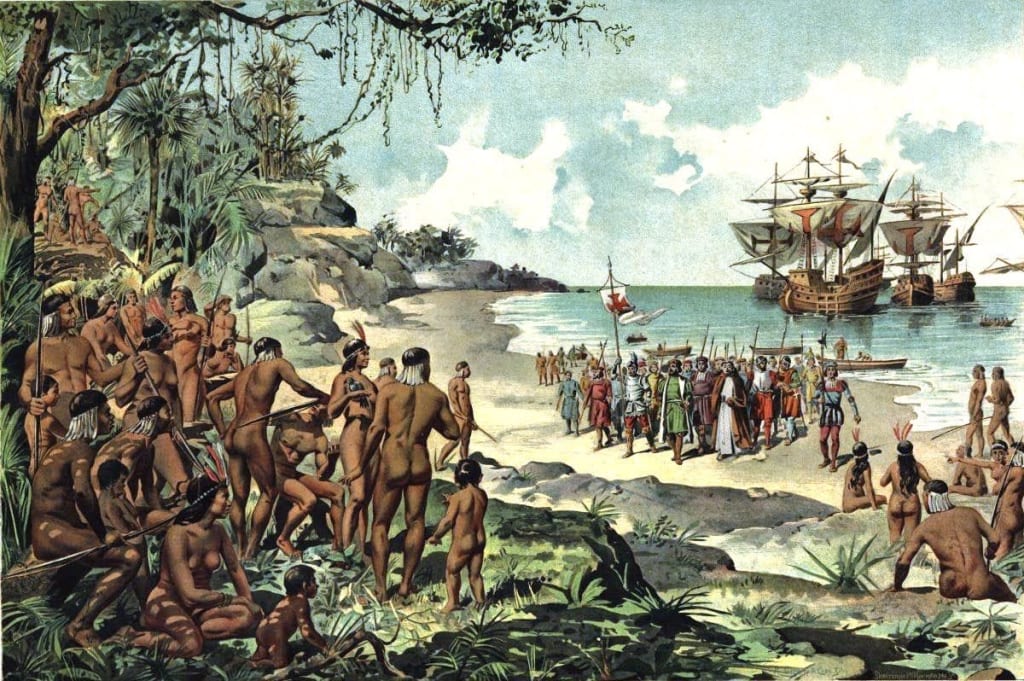The Philippines, an archipelago of over 7,000 islands, stands as a vibrant mosaic of cultures, each contributing to the rich selection of Filipino cuisine. Its flavors, aromas, and textures tell a story of adaptation, resilience, and the harmonious blend of diverse influences that have shaped the culinary landscape of the nation. The cuisine is a fascinating blend of indigenous flavors, Spanish influences from centuries of colonization, Asian elements, and even traces of American impact.
 |
| Island Philippines |
Image by Guy Goddard from Pixabay
The indigenous roots of Philippine cuisine are deeply embedded in the archipelago's natural resources. Before the arrival of foreign influences, Filipino tribes relied on locally available ingredients like rice, fish, tropical fruits, and various root crops. Cooking methods such as boiling, roasting, and steaming were employed, laying the foundation for what would evolve into a unique culinary tradition.
Image by Sasin Tipchai from Pixabay
From the 2nd century AD onwards, trade with China flourished, opening a gateway for culinary exchange that left an indelible mark on Filipino cuisine. Chinese merchants introduced ingredients like soy sauce, vinegar, noodles, and various spices, which found their way into Filipino dishes, adding complexity and depth to flavors. Chinese cooking techniques, such as stir-frying and deep-frying, were also adopted, giving rise to dishes like pancit, a stir-fried noodle dish, and lumpia, a spring roll-like dish, which showcase the enduring influence of Chinese cuisine.
The arrival of Spanish colonizers in the 16th century marked a significant turning point in the evolution of Filipino cuisine. Spanish ingredients like tomatoes, potatoes, onions, garlic, and chili peppers entered the Filipino kitchen, revolutionizing flavors and cooking techniques. Spanish culinary methods, such as stewing, braising, and baking, were adopted, giving rise to dishes like adobo, a savory stew of meat or seafood, and relleno de pollo, a stuffed chicken dish. The technique of marinating meat in vinegar, soy sauce, and garlic, known as adobo, is a culinary legacy of Spanish influence. The use of achiote seeds for coloring and the concept of tapas also made their mark on Filipino gastronomy.
The Galleon Trade between Manila and Acapulco further enriched the culinary landscape. It brought in new ingredients, particularly from Mexico, that seamlessly integrated into local dishes. The amalgamation of these diverse elements led to the creation of iconic Filipino dishes like sinigang, a sour tamarind-based soup, and kare-kare, a savory oxtail stew with a peanut sauce.
The Philippines' exposure to American and Mexican cultures during the 20th century further enriched its culinary landscape. American ingredients like corn, processed foods, and chili peppers introduced new flavors and textures, leading to the creation of dishes like afritada, a stew of pork, vegetables, and tomato sauce, and menudo, a rich pork and vegetable stew. Mexican cuisine also left its mark, with dishes like lumpia shanghai, a variant of the spring roll, and tacos al pastor, a pork taco with pineapple, showcasing this culinary exchange. Also, The introduction of canned goods, processed meats, and new cooking techniques influenced the way Filipinos prepared their meals. Fast food culture, notably with the popularity of American-style burgers and fried chicken, became a significant part of urban Filipino life.
Despite foreign influences, Philippine cuisine has retained its distinct identity, characterized by the use of bold flavors, tropical ingredients, and a communal approach to dining. The Filipino table is a reflection of the nation's warmth and hospitality, where sharing meals is a cultural tradition that transcends social boundaries.
In recent years, there has been a renewed interest in traditional Filipino cooking, with chefs and food enthusiasts rediscovering and celebrating indigenous ingredients and culinary techniques. This revival not only preserves the authenticity of Filipino cuisine but also contributes to the global recognition of its unique flavors.
Today, Filipino cuisine stands as a vibrant and dynamic tapestry, a testament to the country's rich cultural heritage. It is a cuisine that celebrates fresh, local ingredients, bold flavors, and a harmonious balance of sweet, sour, and salty tastes. Dishes like adobo, sinigang, a sour soup, kare-kare, a rich oxtail stew with vegetables, lumpia, and halo-halo, a refreshing shaved ice dessert, have become iconic symbols of Filipino culinary identity.
Filipino cuisine is more than just food; it is a reflection of the Filipino spirit – warm, welcoming, and adaptable. It is a cuisine that has embraced diverse influences and transformed them into something uniquely Filipino, a testament to the country's resilience and cultural richness. As the Philippines continues to evolve, its cuisine will undoubtedly continue to adapt and flourish, captivating taste buds worldwide with its unique blend of flavors, aromas, and textures – a culinary legacy that will continue to inspire culinary imaginations for generations to come.












No comments: